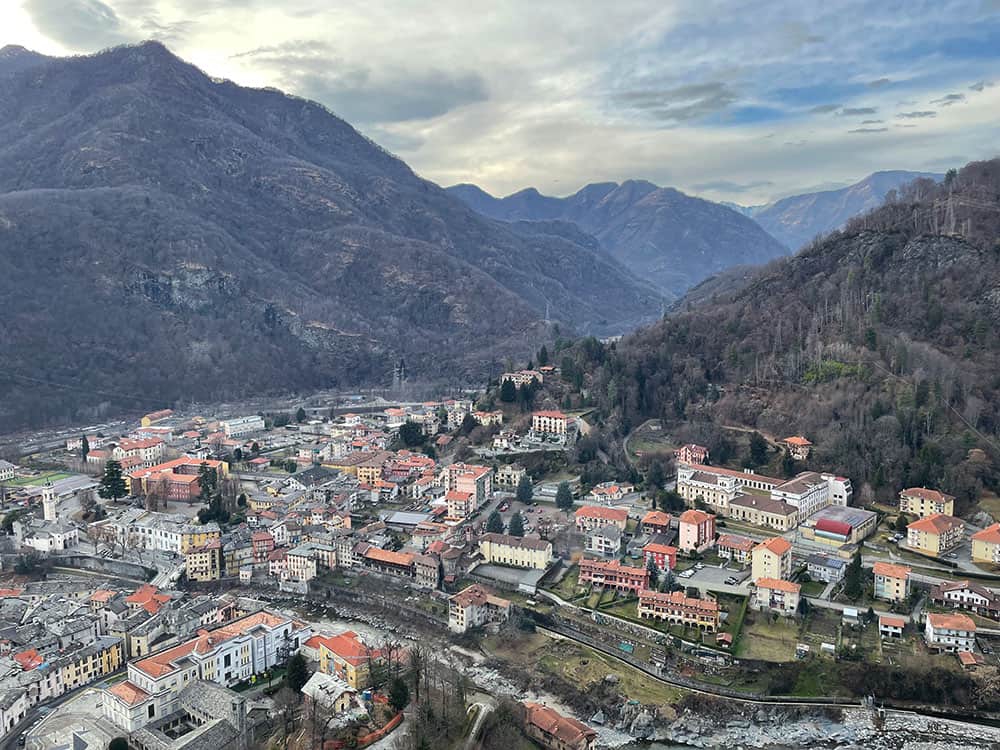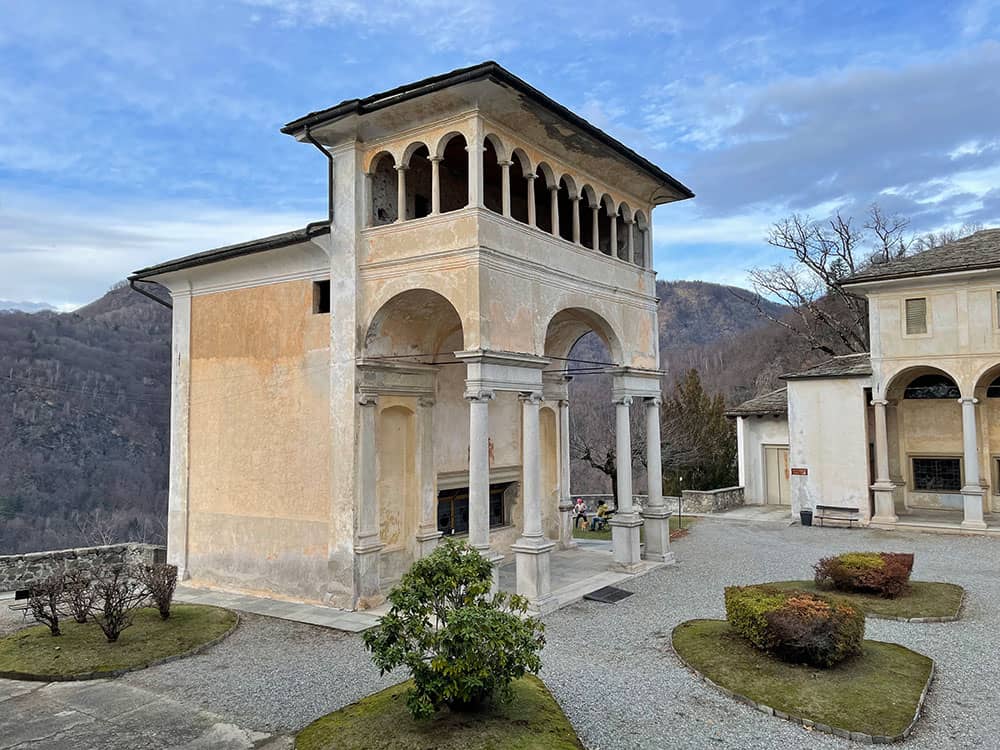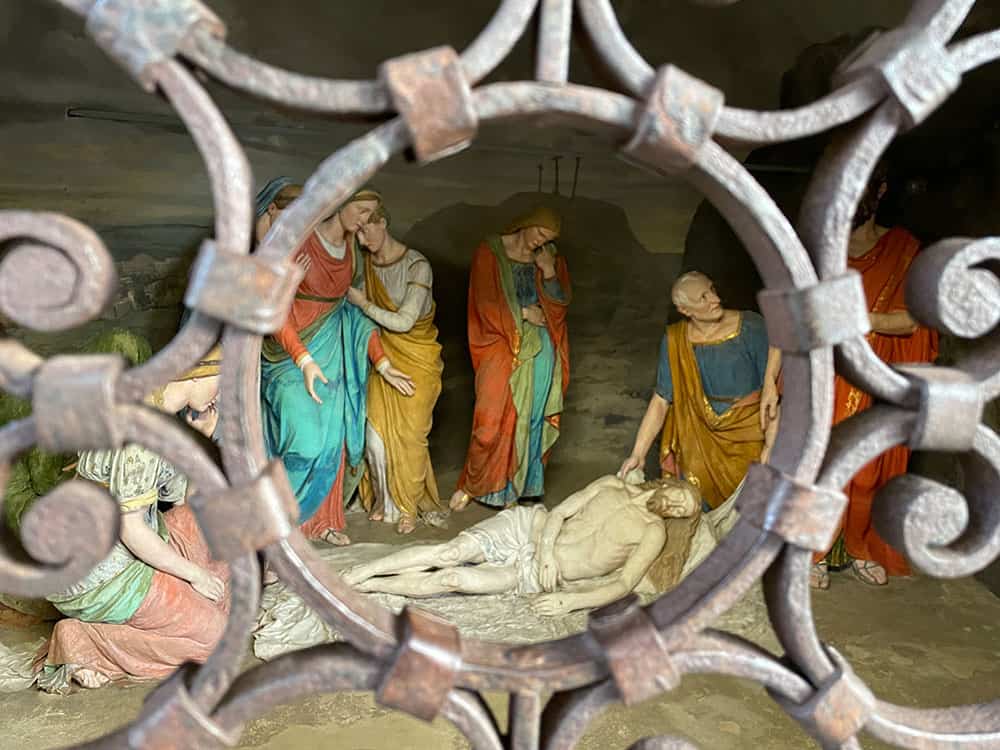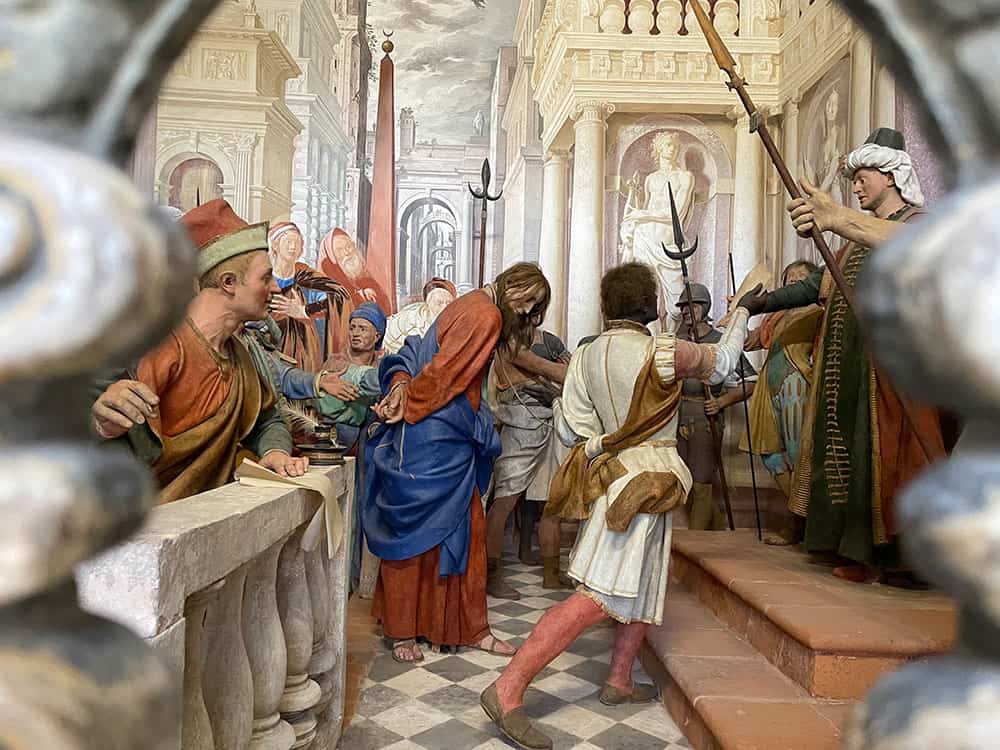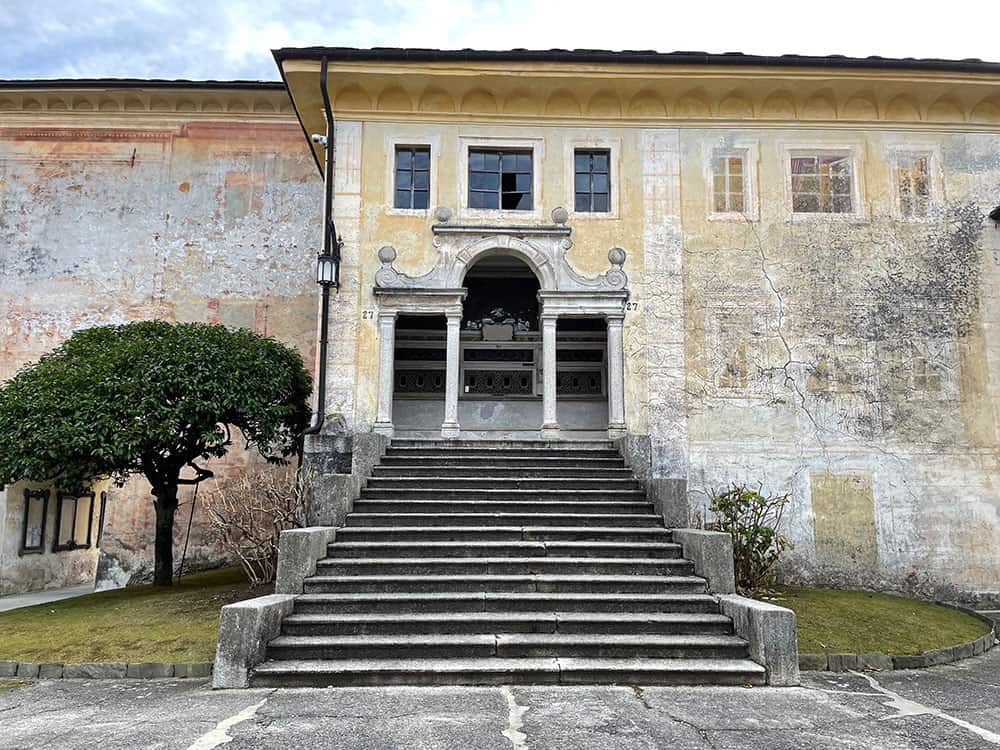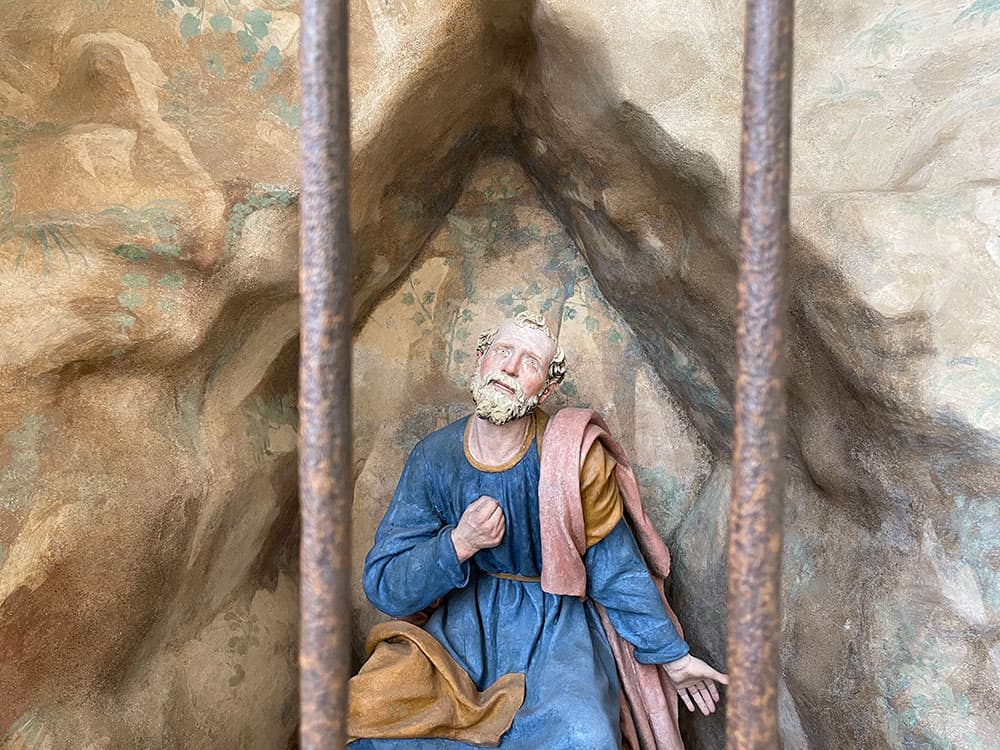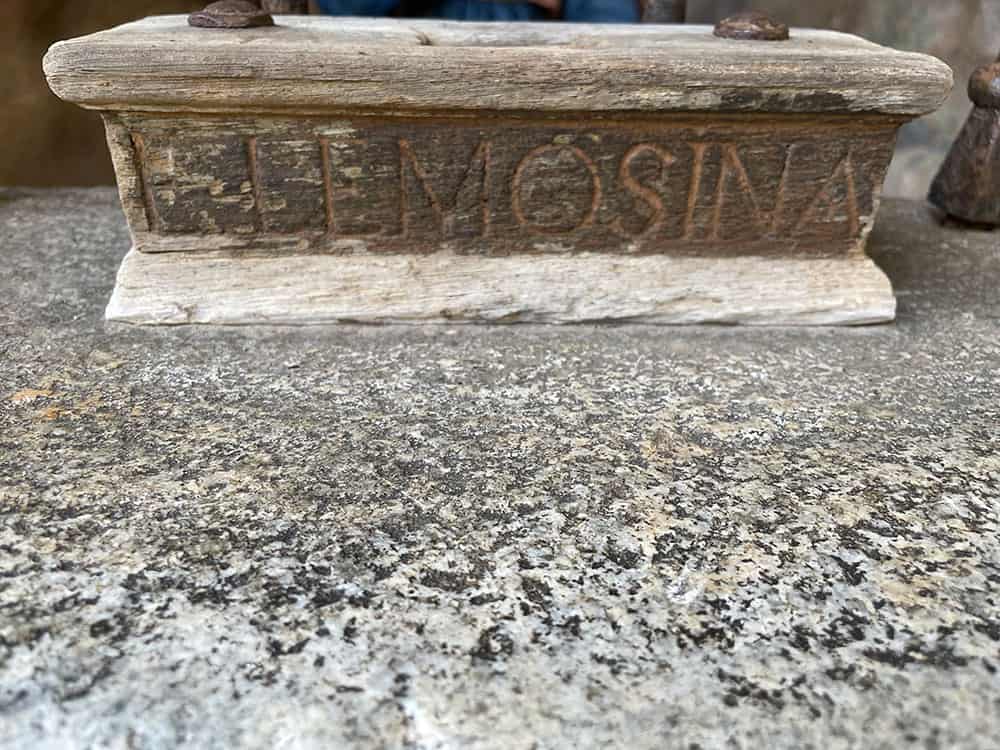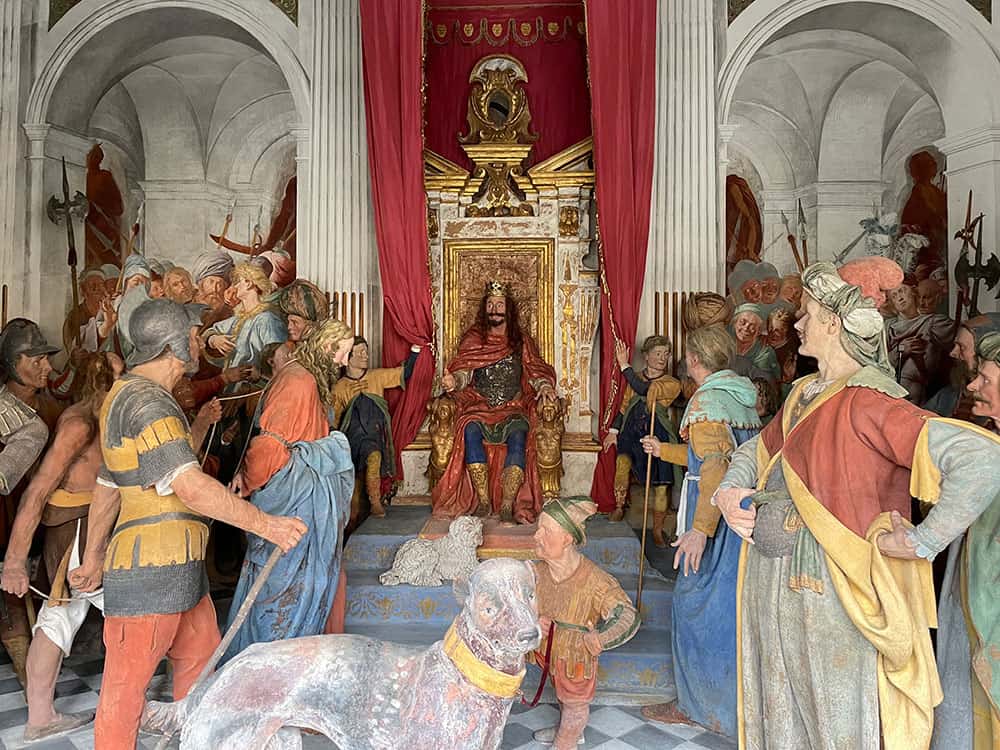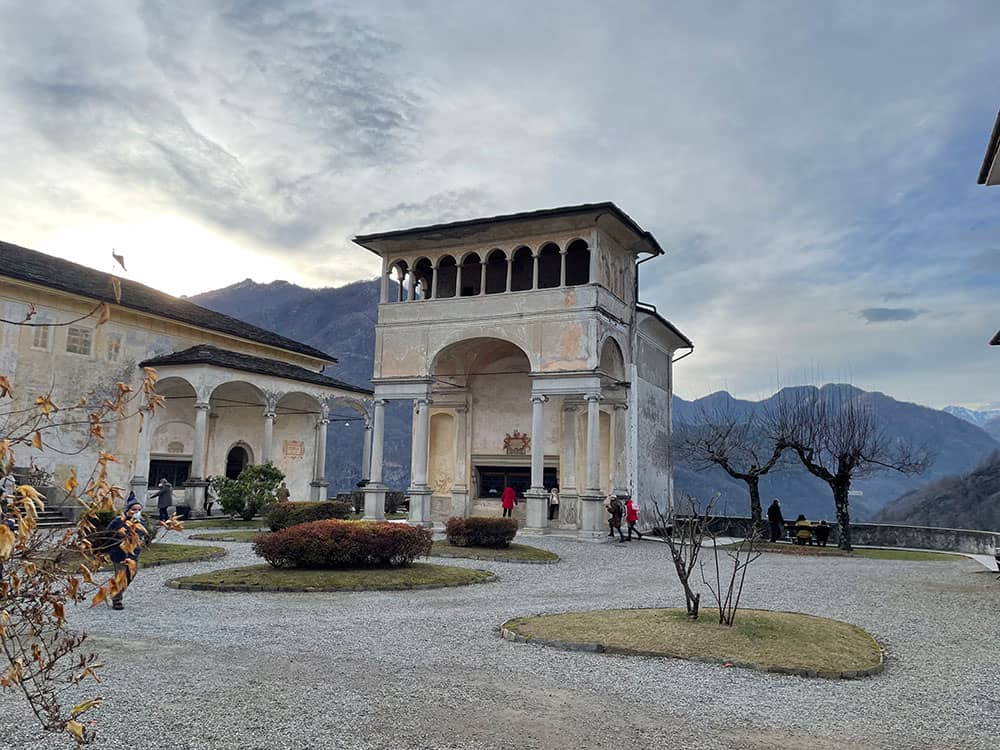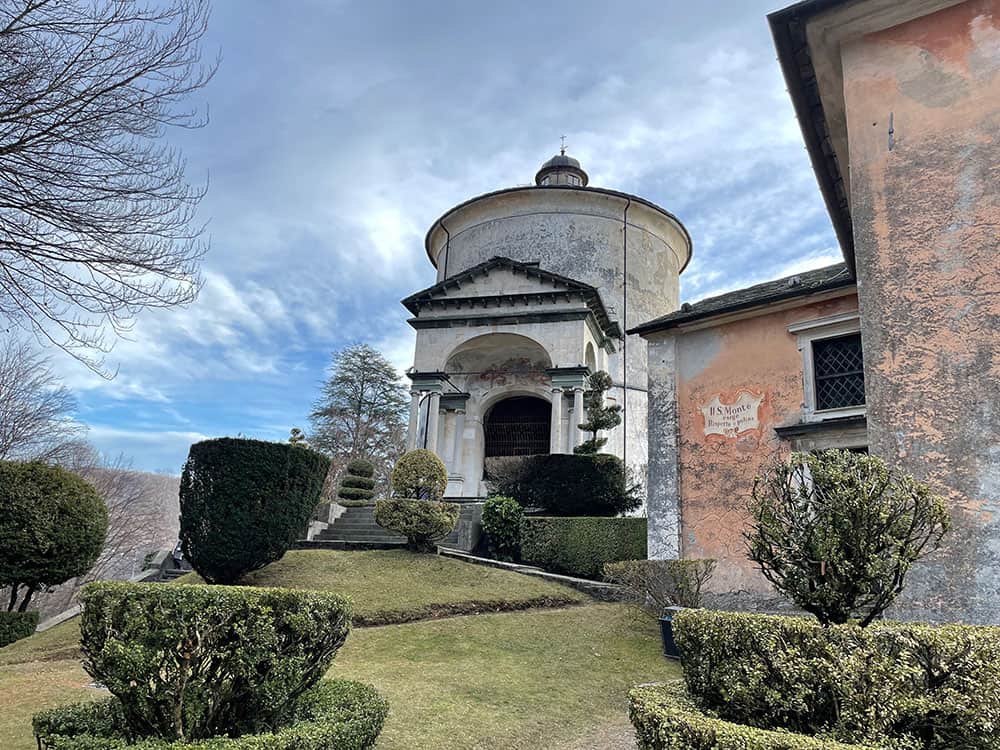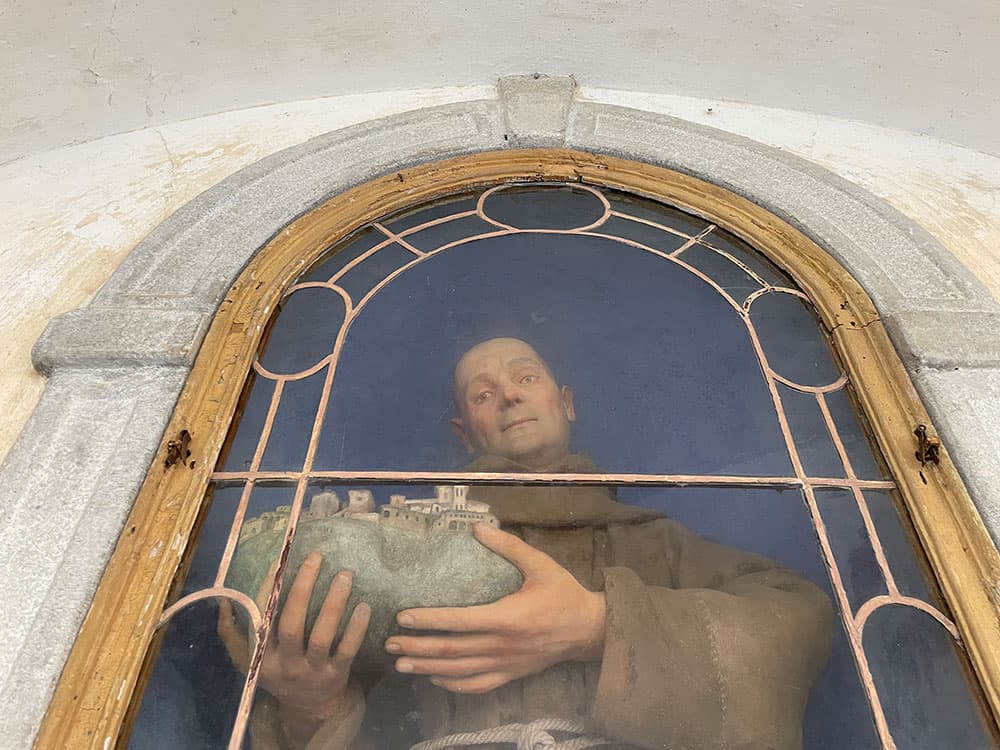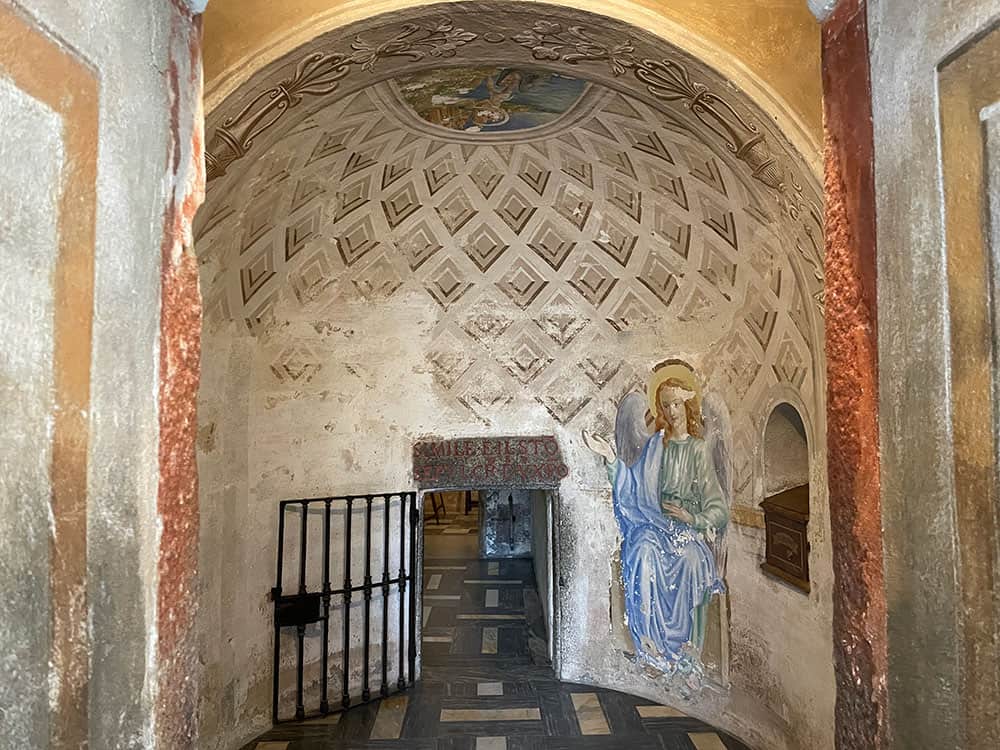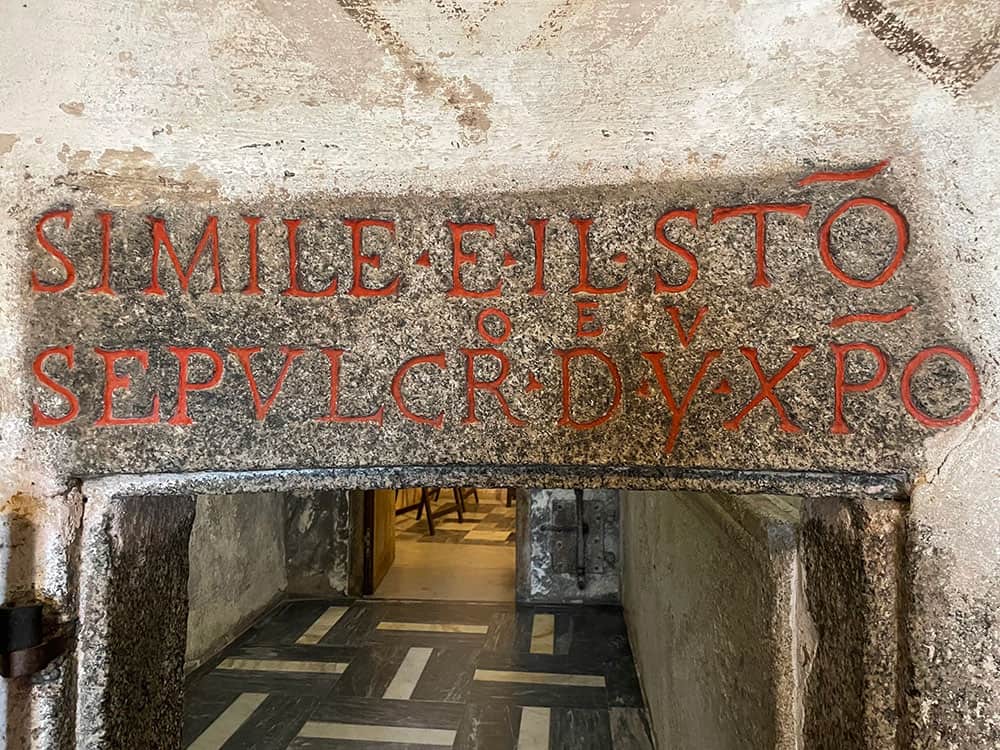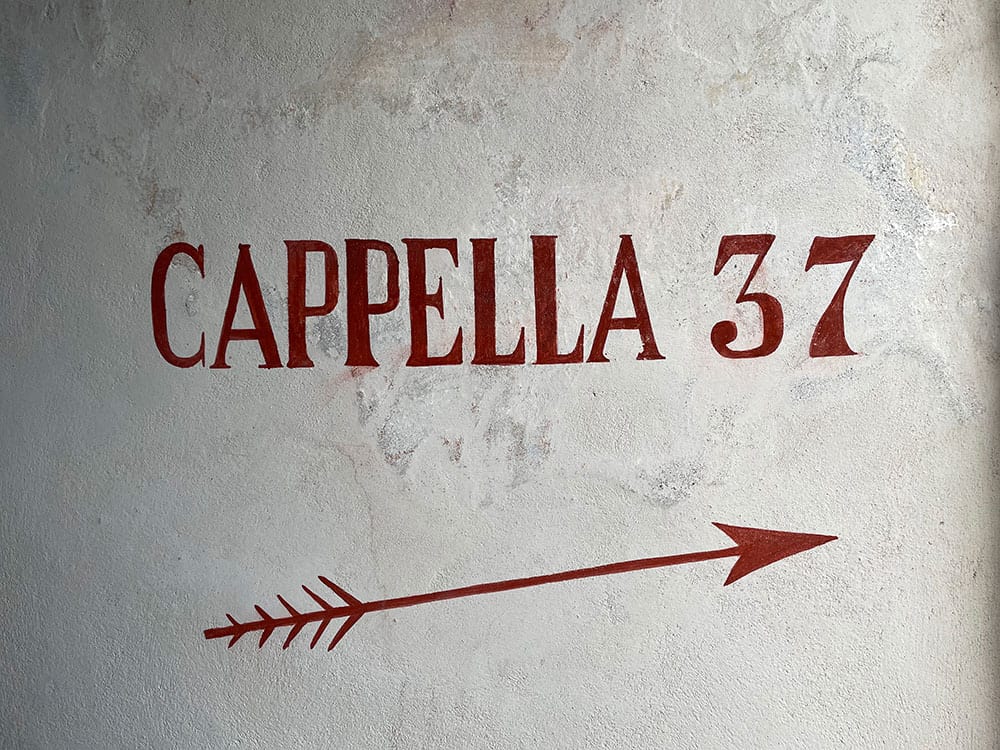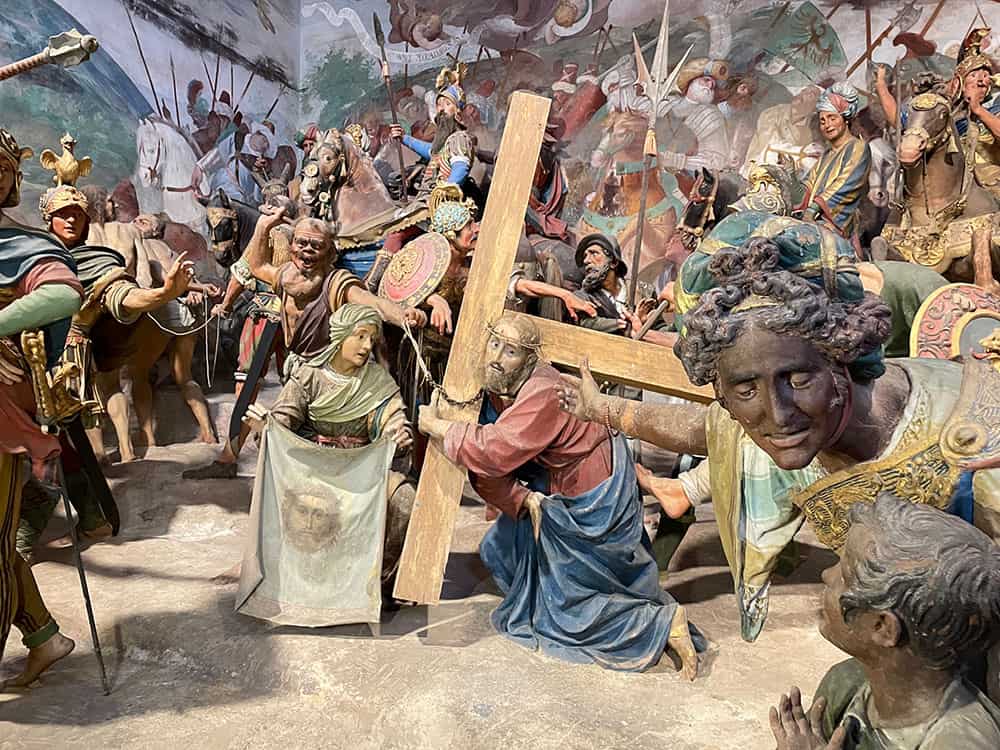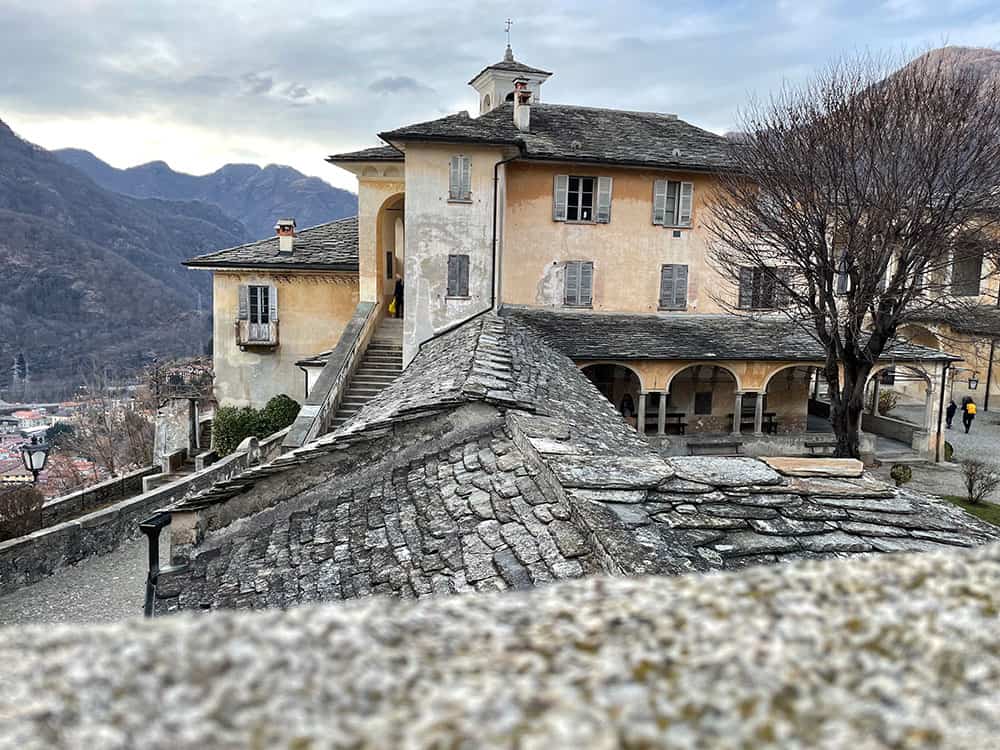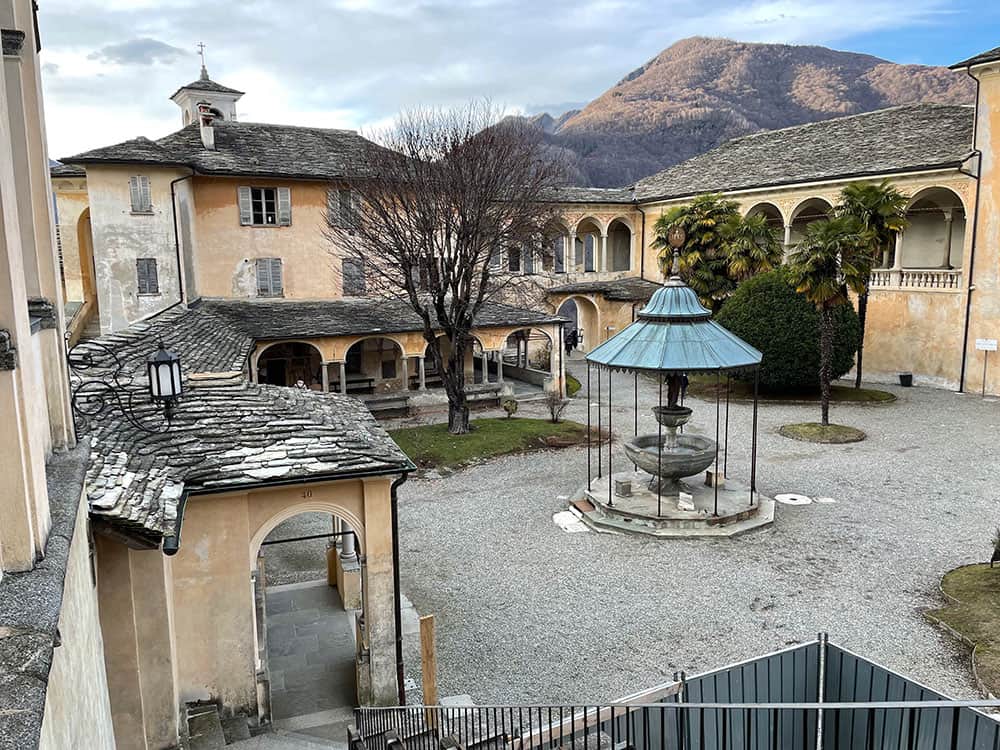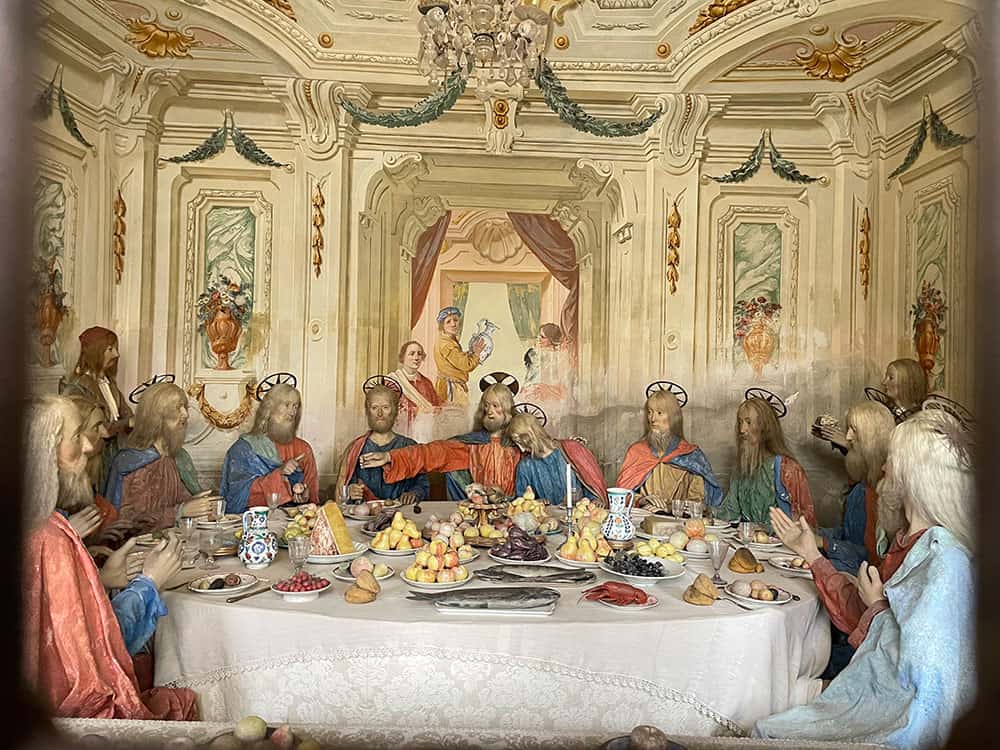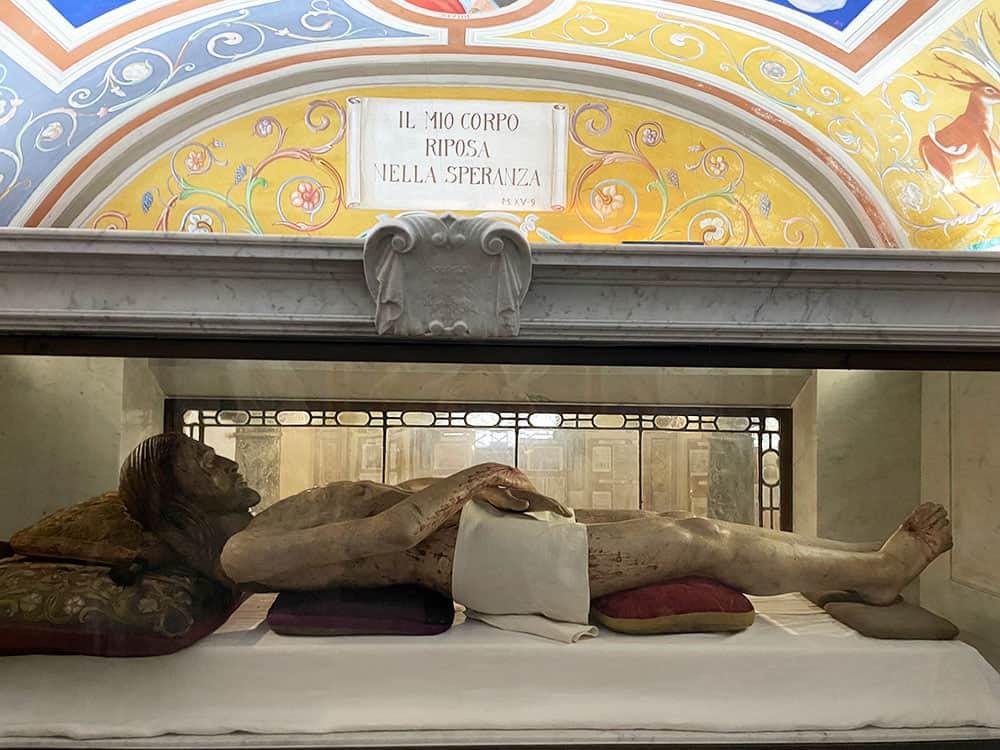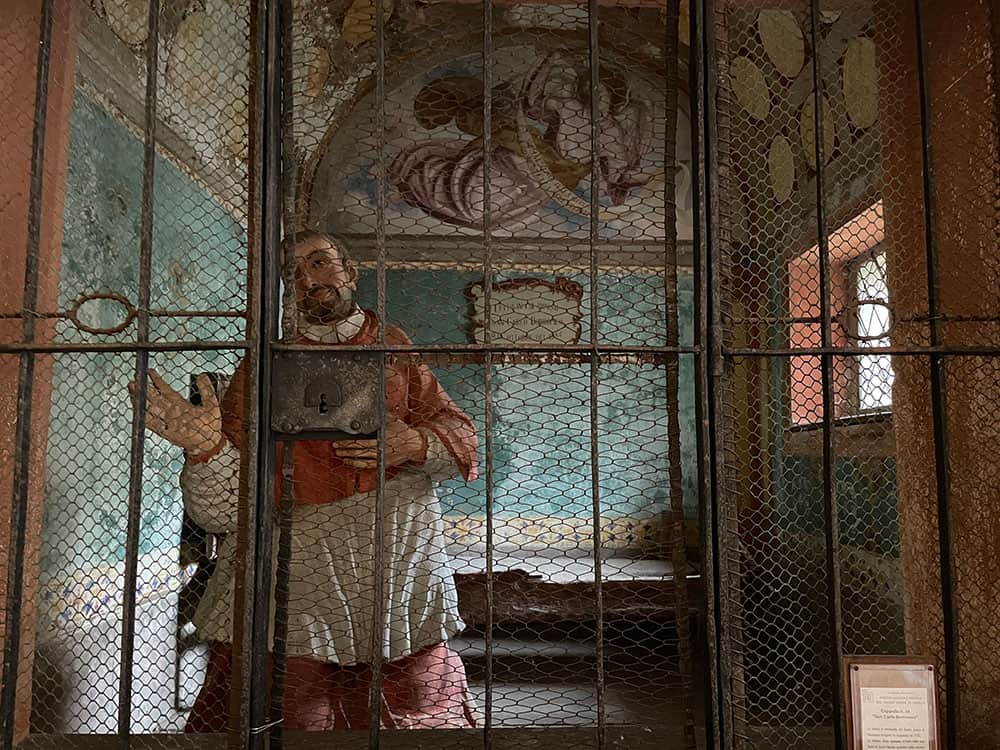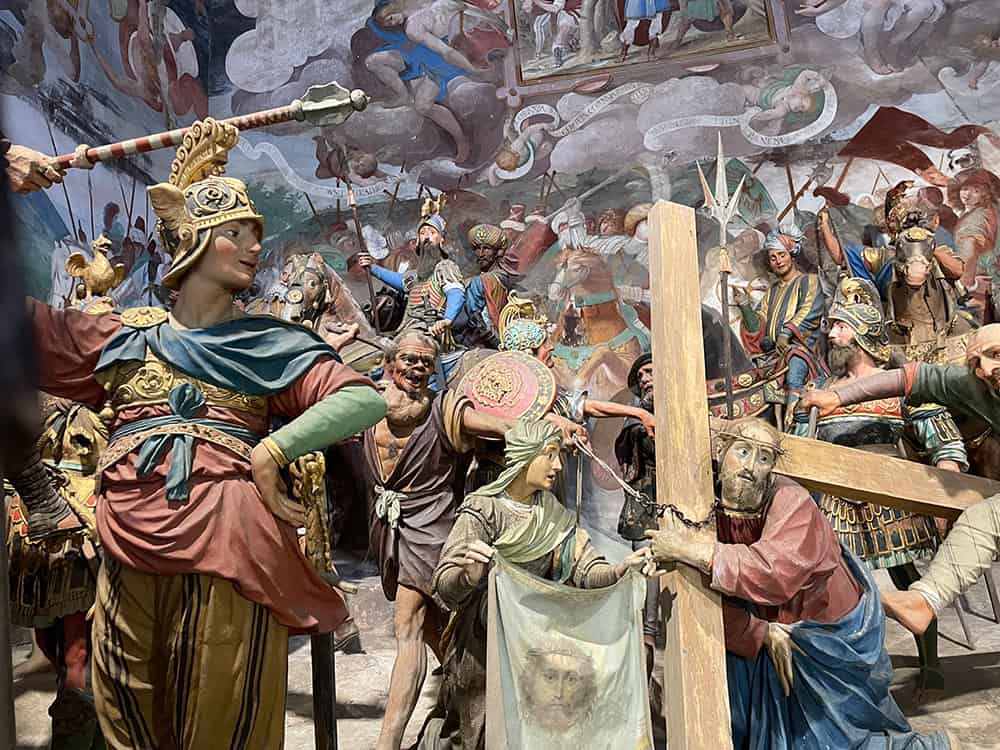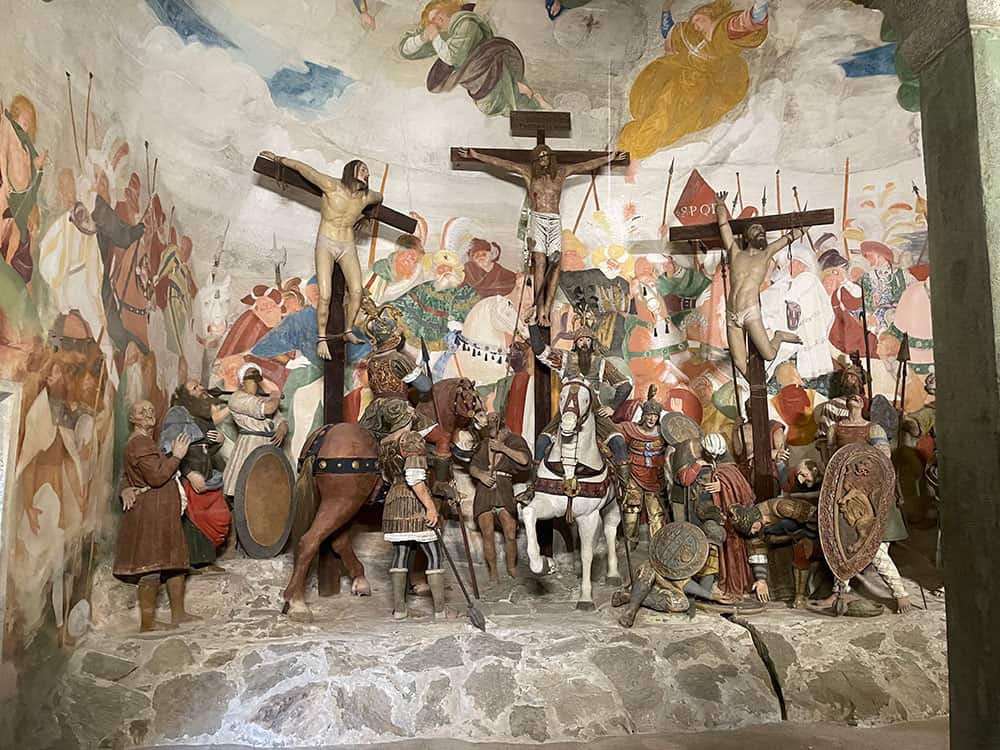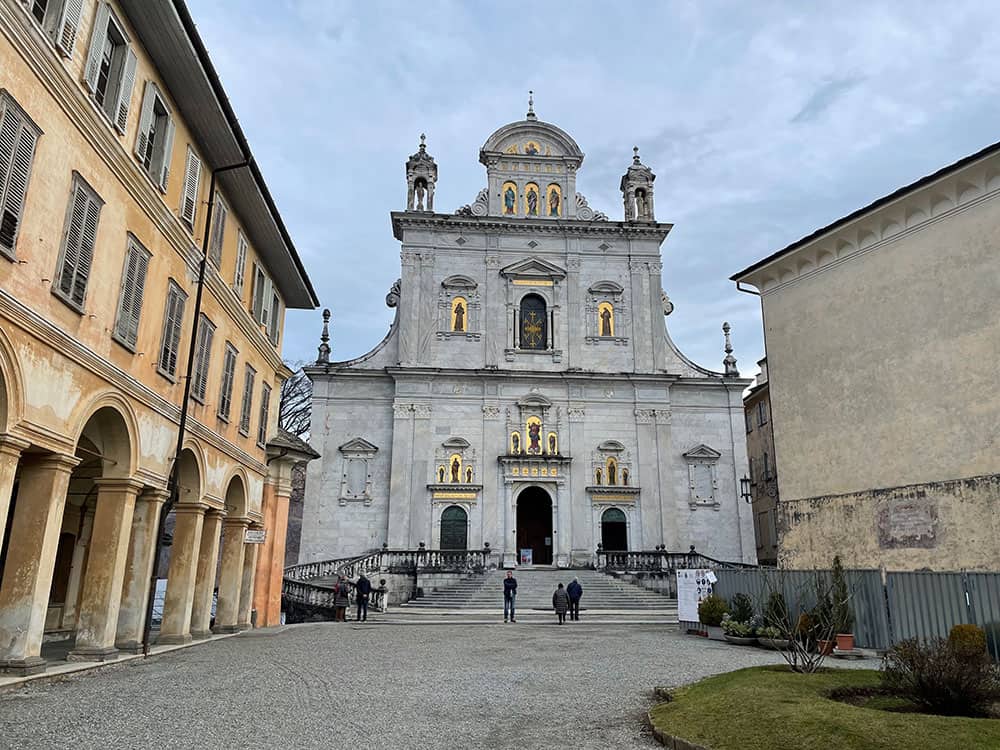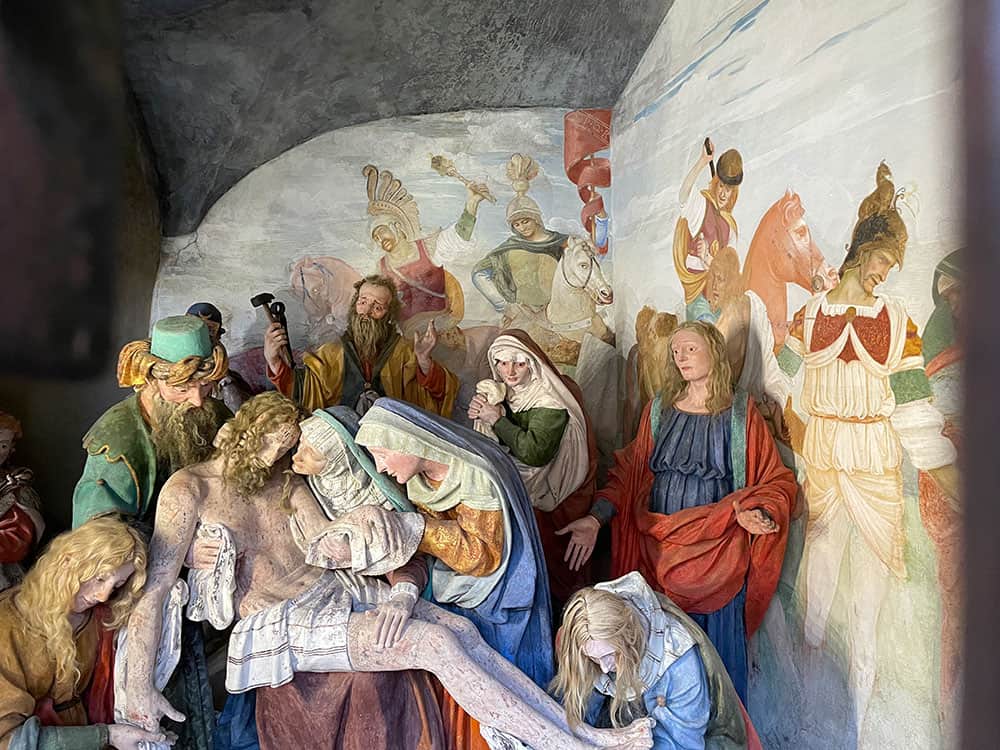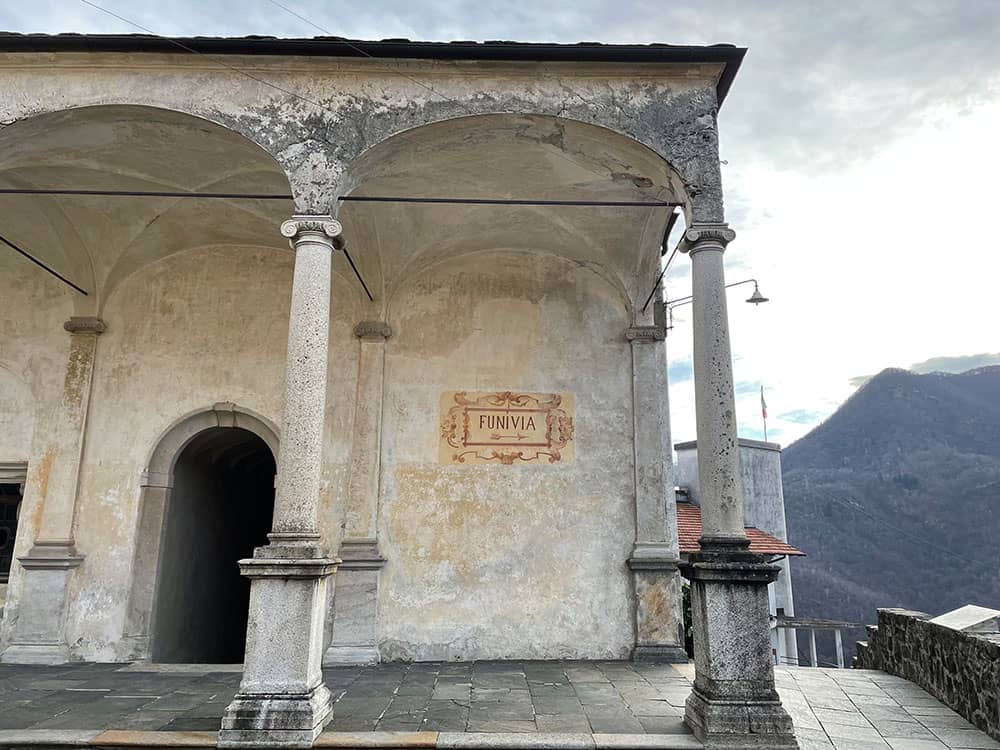Each of us cultivates some unconfessable pleasures and in my case, my weakness, among others, are the reproductions, in scale or not, of people, animals, things, and environments. I love wax museums, dollhouses, miniature designer chairs, plastic animals, 60s bathing caps (with petal flowers), and 19th-century natural history museums with fake dinosaurs.
Luckily I live in a Catholic and not very iconoclastic country, where the Church in the past has largely used visual systems to teach its truth to people who could neither read nor write, transforming works of art into pedagogical tools.
This shrewd didactic expedient developed many artistic and artisanal traditions, of which we can find examples all over the country.
Wooden Christs, Lamentations (Compianti), Nativity scenes, bas-reliefs, display cases that hold the bodies of perfectly reproduced saints, weeping Madonnas, and flying angels: our eyes are continually attracted by figures who lead us through the stories of the Jewish-Christian tradition.
Today we take you on a visit to Varallo Sesia, a village in one of the Piedmont valleys, where we can admire something I would define as an “architectural constellation”, scattered over a rather large area.
From the village we reach Sacro Monte di Varallo, the oldest and most interesting example of the “Sacred Mountains’ system”, a spread-out devotional net built-in Italy close to the Alps, Between Lombardy and Piedmont and recognized in 2003 by UNESCO as a “World Heritage Site“.
A Sacro Monte is a devotional complex generally built on top and on the slope of a mountain with a series of chapels or aedicula in which there are represented, with paintings and sculptures, scenes from the Life of Christ, Mary, or the Saints.
The Sacro Monte (also called New Jerusalem) were meant to offer pilgrims the opportunity to visit the Holy Places with the reproduction, on a smaller scale, of the buildings where the Passion of Christ took place. Usually placed in a secluded position from the urban center, in a more natural environment they could be reached mainly through a pilgrimage. The idea of a theatricalization of the life of Jesus has more ancient origins and these complexes were built throughout Europe already in the fourteenth-fifteenth century, but many of them have been destroyed in the Protestant Reform period.
The concept of “Sacro Monte” is also a religious archetype, the “sacred mountain”, such as, among others, the Ararat, the height of Mount Zion, Mount Sinai, Mount Tabor, Mount Carmel, and above all Calvary, all witnesses in the biblical-evangelical tradition”.
At the time of the construction of the Sacro Monte of Varallo, the Holy Land was under the Turk’s rule, which made pilgrimages to Jerusalem very dangerous. These complexes allowed pilgrims to learn the stories from the bible and the gospel in a safe and very emotional environment.
Varallo Sesia is the oldest of the sacred Italian mountains, built-in 1491 from the idea of Bernardino Caimi, a Franciscan monk returning from a trip to Palestine: it became the model for the other complexes that later arose all along the Alps.
Here the sacred representations are divided into 45 chapels, isolated or inserted in more complex architectures, populated by 800 statues in polychrome wood and terracotta.
As we said, each chapel represents an episode from the life of Jesus and the Passion: around the natural size statues, colorful scenographies were created with frescoes to give a stronger perception of the tale. The natural size statues, which are completely similar to human figures, with beards and true hair, demote their frozen characters with strong expressive power.
And here is the rub: the hyperrealism of the statues hooks me and while my family tries to leave the site satisfied, I remain glued to the protective net outside the chapels to investigate the smallest details.
I was delighted to notice gross errors due to the poor ethnographic preparation of the artists involved in the realization of the statues, whose faces feature mountain dwellers rather than Romans or Semites characters.
One for all a short man with a venous and prominent goiter, an endemic disease of the alpine valleys caused by the lack of iodine …. which I do not think would be a real problem in the Holy Land! Perhaps the most surreal scene though is the XX: the Last Supper, one of the oldest in the complex dating back to the end of the 15th century that shows a table set with all kinds of foods, fruit, boiled eggs, fish, an inviting piece of cheese and even a lobster, with Jesus in the center surrounded by the twelve apostles.
All characters appear as elderly monozygotic twins with white/gray hair and beard (yikes!!, real hair!) and their heads surmounted by halos that look like metal trivets.
The chromatic/personal abstractionism of the characters contrasts completely with the hyperrealism of the foods arranged on the table in front of them ….
A mystery!!
We could easily define these static representations style “pop-kitsch” but there is so much humanity in their simple aesthetic that tickles our most childish side, the one that makes us find attraction around fairs and theaters, cartoons, puppets, and circuses, the one who loves to be deceived to experience the sweet taste of believing.
We recommend you to take your time to visit this place (avoid Saturdays and Sundays) to be able to browse through the infinite details the artists have indulged in creating to capture generations and generations of pilgrim’s attention.
Speaking of pilgrimage: don’t be afraid! A comfortable cable car will take you to the top of the mountain in a few minutes, and you can either enjoy the descent by foot on the pilgrim path or take the cable car back.
Below I report the times and prices of the cable car, the visit is free.
GUIDED TOURS
Info and reservations: Tel. 377.4654982
CABLE CAR FOR THE SACRED MONTEE
Tel. 0163 564391
Return ticket € 5.00
One way € 3.00
Return only € 3.00
Children: free ticket up to 6 years
Timetables: From 01/11 to 31/03 open Saturday, Sunday and holidays: 9.00-17.00
From 01/04 to 31/10 open every day: 9.00-18.00; Saturday, Sunday and holidays 9.00-19.00
Location if you arrive by car:
Betti
[socialWarfare]

